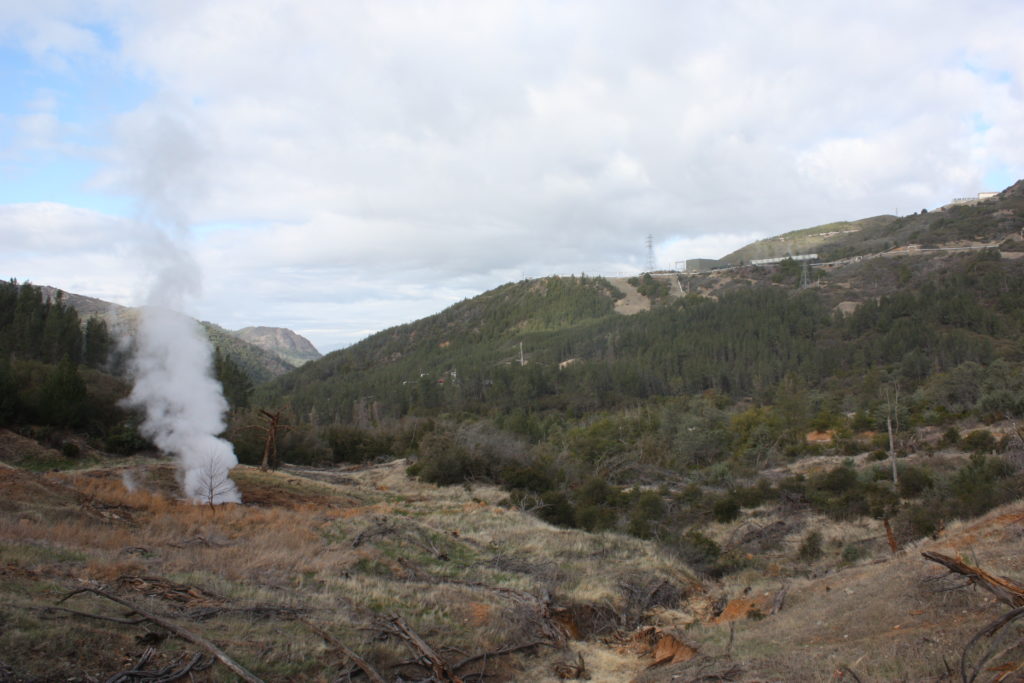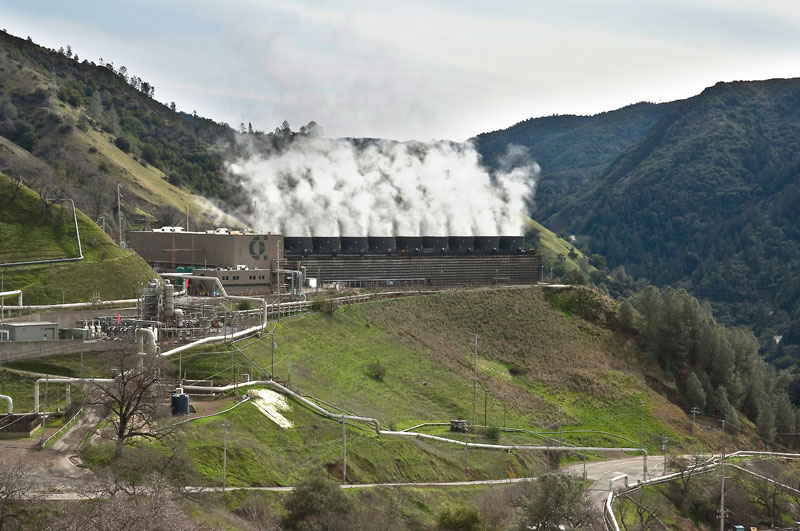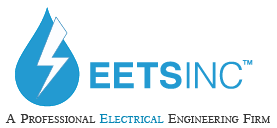Geothermal
Geothermal power involves harnessing heat from the Earth’s core to heat water or another fluid to a specific temperature, which then turns a turbine generator to produce electricity. After use, the water or fluid is cooled and returned to the heat source (the Earth’s core). There are three types of geothermal power stations: dry steam, flash steam, and binary cycle. Dry steam power plants use steam, with temperatures of 150 degrees Celsius or higher, directly from the source to turn generators. Flash steam power plants bring high-pressure hot water (with temperatures above 180 degrees Celsius) into low-pressure water tanks, where the sudden reduction in pressure causes the water to turn into steam (‘flash’), which then drives the turbines. Binary cycle power plants operate with moderately hot water, which is passed over a secondary fluid with a boiling point lower than water’s. This causes the secondary fluid to vaporize when the hot water passes over it, thus turning the turbines. EETS has experience in electrical design for both dry and flash steam geothermal power plants.
SPOTLIGHT
Geothermal Projects
Sonoma County, California
Calpine Sonoma Unit #3 (formerly SMUD Geothermal)

The Sonoma Power Plant, owned and operated by Calpine, is a dry steam geothermal power plant. It generates a baseload of 42MW using Mitsubishi steam turbines.
- Modifications and additions for 21kV service to City of Santa Rosa Wastewater Treatment Plant
- 30MVA load-tap changing 13.8kV:21kVA transformer
- 4000 amp non-segregated phase bus tap
- 13.8kV and 21kV breakers, disconnects, structures, and footings
- Protective relaying and metering additions and modifications
Sonoma and Lake Counties, California
Calpine Geysers Geothermal Units #1, #13, #14, #18, #19

Calpine’s Geysers Geothermal Units collectively form the world’s largest complex of geothermal plants, with a net generating capacity of 725MW of electricity. EETS engineers contributed to the design and modifications for five of the fifteen power plants, including designing microprocessor protective relay upgrades for the 230kV substation and unit generator protection. These five plants represent more than 300MW of capacity.
